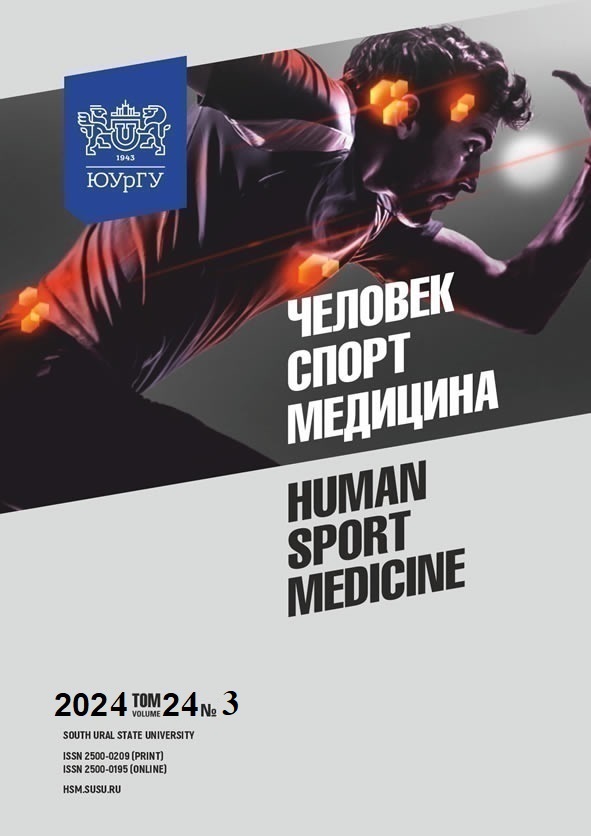REGULATORY MECHANISMS OF THE FUNCTIONAL SYSTEM RESPONSIBLE FOR THE DEVELOPMENT OF STRENGTH ENDURANCE AND HYPOXIA IN ADOLESCENT SWIMMERS
Abstract
Aim. This study aims to identify the features and regulatory mechanisms of the specialized functional system among adolescent swimmers. Materials and methods. The study involved swimmers within the age group of 12 to 17 years. The investigation was conducted on plain terrain in the swimming pool at the Unika swimming center (South Ural State University), utilizing a set of diagnostic tools, including the AMP system analyzer (Ukraine), urine analyzer (Germany), Centaur diagnostic system (Microlux, Russian Federation), Schiller stress system (Switzerland), and Tanita body composition analyzer (Japan). Statistical analysis was performed employing methods of mathematical statistics. Results. The study showed elevated baseline indicators. High AE threshold levels were observed at relatively low lactate concentrations. Through the application of the treadmill test, a range of individual indicators was revealed, including the maximal voluntary ventilation (108–167 l/min), the respiratory rate (41–47 cycles) at the last stage, the oxygen debt (60–94 ml/kg), the hypoxic training index (1.60–4.90 units), and the aerobic threshold heart rate (156–167 beats per minute). Conclusion. The findings underscore the complex interplay of adaptive compensatory неmechanisms, the adequacy of certain parameters, the excessiveness of others, the interchangeability, and the dynamic interconnectedness of the functional system components.
References
References on translit
Copyright (c) 2024 Human. Sport. Medicine

This work is licensed under a Creative Commons Attribution-NonCommercial-NoDerivatives 4.0 International License.















